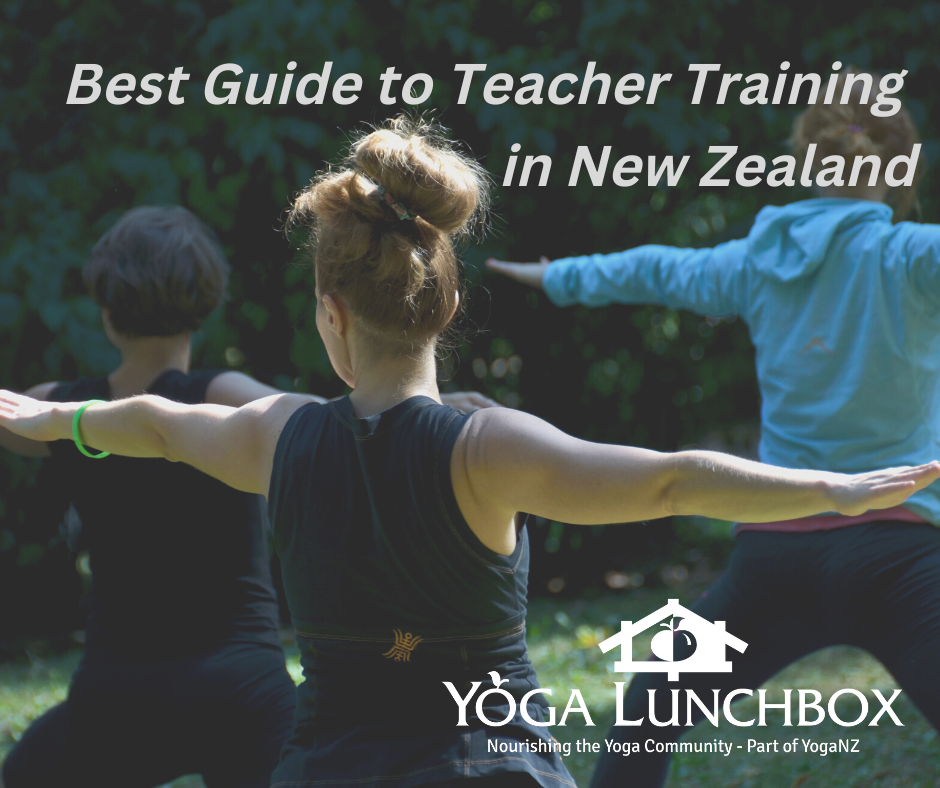By Lucinda Staniland
It’s the holy grail of the yoga world: A Yoga Teacher Training that is transformative, comprehensive, and great value for money.
But how do we find such a thing?
Currently, the price of Yoga Teacher Trainings can vary hugely, from (very rare) free or koha based trainings, to $4000 for an average NZ or Australian based training, to upwards of $16,000.
As someone who is seriously considering undertaking a Yoga Teacher Training (but just hasn’t found the right one yet) I’ve often asked myself: With so much variation in the cost of Yoga Teacher Trainings, how do I know when I’m getting real value for money?
This is especially relevant if your are considering yoga as a career, because, as many of us know, making money as a yoga teacher can be very difficult.
To find out more I contacted around thirty Yoga Teacher Training courses, mostly in New Zealand and Australia.
I asked them a brief series of questions about the cost of their Teacher Trainings, the factors that affect that cost (class size, experience level of the teacher, contact hours etc.) and what they think of the general cost of Yoga Teacher Trainings in the yoga industry.
Unsurprisingly, I didn’t get a huge response. This kind of information can be commercially sensitive and it’s not something that many studios want to open up about, but the studios that did respond gave me some striking insights into how the Yoga Teacher Training industry functions.
Amanda Fuzes of Prana Space, a specialist yoga studio in Sydney, echoed my concerns about Yoga Teacher Trainings that are a have a poor return on investment, saying:
Students have to be careful with overpaying for TT (Teacher Training) programmes. While a lot of Yoga TT is personal development, it’s not a hugely profitable career choice- so it’s hard to justify paying a lot of money for a training that may not provide a great salary in the long term.
But Amanda, and the other teachers I heard from, were all able to explain exactly why their Teacher Trainings were high value, justifying the (generally) high price tags.
The key factors that Studios said affected the price of their Yoga Teacher Trainings were:
- The experience level of the teacher/s
- Accommodation and food
- Location
- The minimum and maximum class size
- The amount of contact hours
- The status of the Yoga Studio
- Resources i.e textbooks, DVDs, PDFs
- Including access to other classes at the Yoga Studio
Looking at these factors, I realised that prioritising items on this list would be a good way to determine whether or not a Yoga Teacher Training is good value for the individual.
Whether or not a Teacher Training is ‘good value’ depends on what your personal wants and needs. Meaning there’s no point getting outraged about the high cost of Yoga Teacher Training (or getting excited about a super cheap one) without determining the value of that training to you.
For example, if it’s important to you that the Training is in an exotic location, with beautiful accommodation and that all your food is organic and cooked for you then you need to be willing to pay a higher price for a training that meets this criteria.
If you want to practice with a specific yoga teacher who is very experienced and/or well known then you will have to pay a higher price for the expertise.
But are there also some general indications of the value and quality of a Yoga Teacher Training?
In general, smaller class sizes, more experienced teachers, and lots of contact hours is a good sign.
Class size
Barbara Coley of Svastha Yoga in Auckland takes a minimum of five and a maximum of ten students for her 200 hour Yoga Teacher Training, but to her the minimum requirement is less important than the dedication of the students.
This year I had only three students, but they were so committed to the course that I decided to run with it anyway.
But is small class size always an indication of a higher quality training? Maybe not.
Radiantly Alive, a yoga studio based in Bali, have up to seventy five students in their Level 1 Teacher Training.
However, they justify the large class sizes because they bring in a variety of “internationally acclaimed faculty from the world over” to assist with the teaching, and because they have additional support in the form of mentors, who can help provide the personal guidance the students need. James Mattingley, Yoga Teacher Trainings Coordinator at Radiantly Alive, says:
We make all of our trainings ‘intensive’, so the trainees get a huge amount of ‘face time’ and consistent direct feedback about their progress. Additionally we have a mentoring team set up for our Level I trainings. These are Alumni of Radiantly Alive who return to act in a different capacity, to help guide and transform groups of trainees. Depending on the size of training, we have between 4 and 7 mentors, all of whom go through further rigorous training to be mentors.
Contact hours
This seems self explanatory to me. The more time you spend in direct contact with a teacher, and the more time you spend learning, the more you will learn.
The experience level of the teacher(s).
Of the teachers I surveyed most had between ten and twenty years teaching experience, one had thirty years plus, and one of the key drawcard’s of Radiantly Alive’s Level I course was “250 years of combined teaching experience!”
Many years of experience is a good sign that a teacher will provide a teacher training that is both safe, stimulating, and maybe even transformative. A skilled and experienced yoga teacher really can can revolutionize your yoga practice and your life.
Does an experienced teacher always equal a great teacher? No, of course not. Teachers like the much maligned Bikram Choudhury are evidence of that. But if a person has been teaching for a decade or more it seems fair to assume they are passionate about yoga, knowledgeable and skilful, and work well with their students.
And, what about accessibility? This is a conversation that’s often overlooked in the yoga world. The truth is that access to yoga usually involves privilege, especially socio-economic privilege.
For some people, no matter how committed or invested they are in their practice, they just don’t have the funds available to take the next steps. It’s heartening to hear stories about Yoga studios that offer scholarships or financial assistance to students who really are unable to afford a Teacher Training, or about initiatives that take yoga to communities that normally can’t access it.
How do we find the ‘perfect’ Yoga Teacher Training for us, that is also great value for money?
1. Prioritize. Know exactly what you want and need from a Teacher Training down to the smallest details (food, accommodation, length, teaching style)
2. Ask yourself: Will this Teacher Training help me become the kind of yoga teacher (and person) that I most want to be?
3. Look for the following:
- Teachers with presence, a deep passion for teaching yoga, many years experience, and their own yoga practice.
- Small class sizes (or larger classes with more mentors and teachers to support)
- Lots of contact hours
- A sense that the school or studio is invested in Yoga Teacher Training at a level that goes beyond the commercial.
And if you are ready to make the leap of faith here in NZ, check out our updated Yoga Lunchbox Best Yoga Teacher Training Guide 2023.


@Lucinda Staniland I suggest if one is seeking Yoga Teacher training at cheaper rate then He/she should plan for yoga teacher training in India, especially Delhi and Rishikesh.
You can only teach “Yoga” if you know what “Yoga” means…. Read the “Power of Now” by Eckhart Tolle or books by Rupert Spira or Tony Parsons or look for “Nonduality” videos on YouTube. Once you realize what Yoga is all about you will be a much better teacher. But most important is the love of the job. You will never get rich and in time the job will get boring like any job but do it anyway,.. follow your heart.. Good luck. By the way, there is much demand for gentle and fun Yoga classes for Seniors. They have time and money and Yoga is great when you get older. I know, I spend a few weeks every year at the Sivananda Yoga place in Bad Meinberg/Germany.